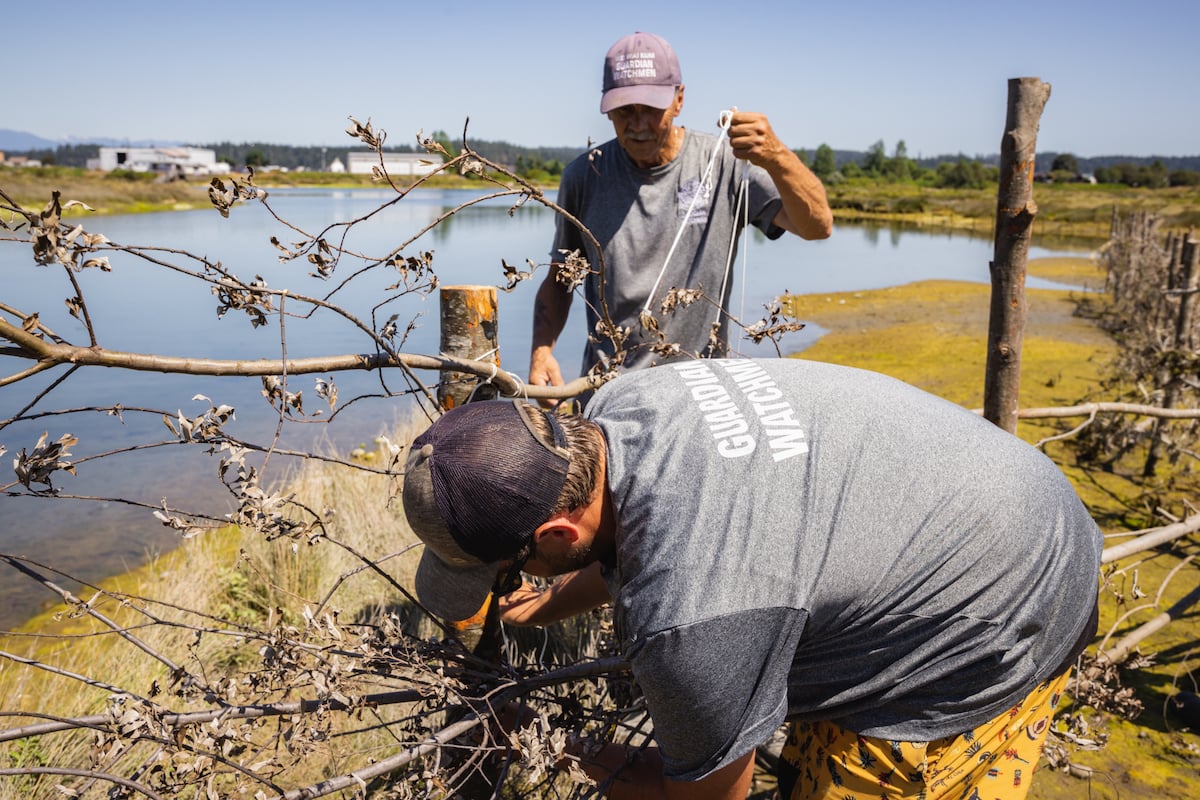Support strong Canadian climate journalism for 2025
British Columbia environmental groups say the province’s newly released Coastal Marine Strategy should be the first step toward a law that would protect coastal habitats from shoreline development.
Nova Scotia has tried to make similar legislation work, but stalled when a new government was elected.
Homes built along the coast are vulnerable to sea level rise and increasing frequency and severity of storms caused by climate change, prompting questions about whether building near shorelines should be regulated.
Sea levels are expected to rise a meter by 2100 — a figure that would result in 13 square kilometres of additional floodplain in the city of Vancouver alone. Coastal communities of Newfoundland experienced the rise in storm severity firsthand in 2022, when hurricane Fiona ripped through, destroying 100 homes.
Increased storms, habitat encroachment through shoreline development and armouring, and sea-level rise all put coastal communities and ecosystems at risk. But those ecosystems themselves can play a valuable role in mitigating the damage: wetlands such as salt marshes, for example, can slow storm surges and absorb wave impacts before they have a chance to slam into the coast.
Elizabeth Hendriks, vice president of restoration and regeneration conservation for World Wildlife Fund Canada, says those kinds of natural systems play an important role in protecting coasts — and capturing carbon in the atmosphere.
Increasingly harsh weather events are leading some property owners and communities to “harden” their shorelines, adding sea walls or jetties that protect houses from the ocean, sea level rise and weather events. But in the process they’re damaging habitats of coastal species, Gray said.
The B.C. Coastal Marine Strategy was announced last month as a unifying vision to guide decision making on B.C.’s waterways and coastal resources for the next 20 years. It does not lay out a concrete plan of action and is not legally binding.
“We refer to the coastal strategy as a blueprint for the coast because it provides long term direction to guide governments in the planning and management of coastal areas,” said Erin Gray, staff lawyer with West Coast Environmental Law.
“We have advocated for this strategy to be legislated — which means a new coastal law,” Gray said.
A new comprehensive coastal marine law, administered by one ministry, could force developers and municipalities to consider cumulative effects — not just the effect of a single development, but the degradation to ecosystem health that has already occurred in that area, Gray wrote in a follow-up email to Canada’s National Observer. She also argues it would eliminate jurisdictional overlap, something that plagues coastal protection because of the multiple levels of government — and agencies — responsible for different parts of the coast. Rather, a unifying law would encourage collaboration between all levels of government.
East coast parallels
The U.S. states of Washington, Oregon and California all have laws that protect the coast — but in Canada, similar ventures into shoreline legislation have not fared well.
Kate MacMillan, conservation director of the Canadian Parks and Wilderness Society, B.C., drew a parallel between what groups are advocating for in B.C. and what Nova Scotia went through with the fall-through of that province’s Coastal Protection Act.
In 2019, under a Liberal government, the province’s Coastal Protection Act was introduced and passed to provide overarching protection of its coast in the form of restrictions on shoreline development. It was seen as a positive step forward at the time.
From there, however, the law’s journey was rocky.
Proclamation of the act stalled when the Progressive Conservative government came into power in 2021. The new government said it was taking time to further consult coastal landowners before it would consider making the act law.
Many Nova Scotians didn’t receive the invitation to participate in those consultations, says Nicolas Winkler, a marine biologist and coastal adaptation coordinator with the Nova Scotia-based Ecology Action Center.
Winkler says those who did not respond were assumed by the government to be against the Coastal Protection Act, giving the PCs a reason to pivot from a legally binding act to an action plan in February.
After half a decade of working toward getting a law implemented, the last-minute changes were a let-down for activists.
“There was a lot of disappointment,” Winkler said.
“The government has not given a good, compelling reason, in our opinion, for this change,” Winkler said. “It came as a complete shock. As recently as the fall of 2023, the government was [saying] ‘Yeah, we're still working on this.’ … I like to call it classic political gaslighting.”
During the years while the Coastal Protection Act was in limbo, Nova Scotia developers rushed to develop on shorelines at the prospect of laws coming in to protect these coastal plots. Winkler says those in favour of the departure cited the housing crisis, and need for more housing development, as a reason to weaken rules against building along the coasts.
“Affordable housing isn't being built on the coast, right? Let's be very honest about that one,” Winkler said.
Winkler adds one of the consequences of not proclaiming the act was that liability for coastal protection fell to individual municipalities, in addition to individual property owners who don't have the resources or deep understanding of coastal processes to effectively take care of it.
That’s where a provincial act would make the difference, says Winkler. Better governance is something groups in B.C. are also hoping the Coastal Marine Strategy can help achieve on the West Coast.
Similarly, the Coastal Marine Strategy notes shoreline development as a municipal responsibility, but who is in charge of any given project or location can be a jurisdictional mess.
B.C.’s Local Government Act and Community Charter delegates authority of shoreline activity to local governments, and the B.C. Environmental Assessment Act governs the impact of major projects. Federally, the Fisheries Act protects fish and fish habitat on shorelines, and the Impact Assessment Act, similar to the B.C. Environmental Assessment Act, assesses major projects, Gray wrote.
The overlap in its current state makes shoreline protections difficult to enforce, says Huard.
“It just kind of makes it nobody's problem, because it's everybody's problem, and a lot of confusion about who is responsible.”






Comments
The Municipality of the District of Lunenburg, {modl.ca) adopted a coastal protection bylaw and regulations because this is a region on Nova Scotia's south shore that is experiencing the effects of sea level rise already.
The problem not aging the province involved is that only the minister can enforce coastal protection because it depends on where the high-water mark is drawn.
There was some opposition, including people who think climate change is a hoax to control people. I'm not sure whether someone will sue, but it will likely happen.
I salute the mayor Carolyn Bolivar Getson for being brave and doing the right thing.
For decades now both fresh water and salt water shores are allowed to privatize public shoreline and politicians fail to do anything about it. Hard surfacing blocks access along the shore line where many have traditionally walked to enjoy that beach.
Even titled land, owned by the municipalities is not protected as the elite get their way with the politicians even after building illegal structures. I gave up even pointing out encroachment as I knew nothing would happen. Never mind the environmental effects they don't count to politicians and the wealthy